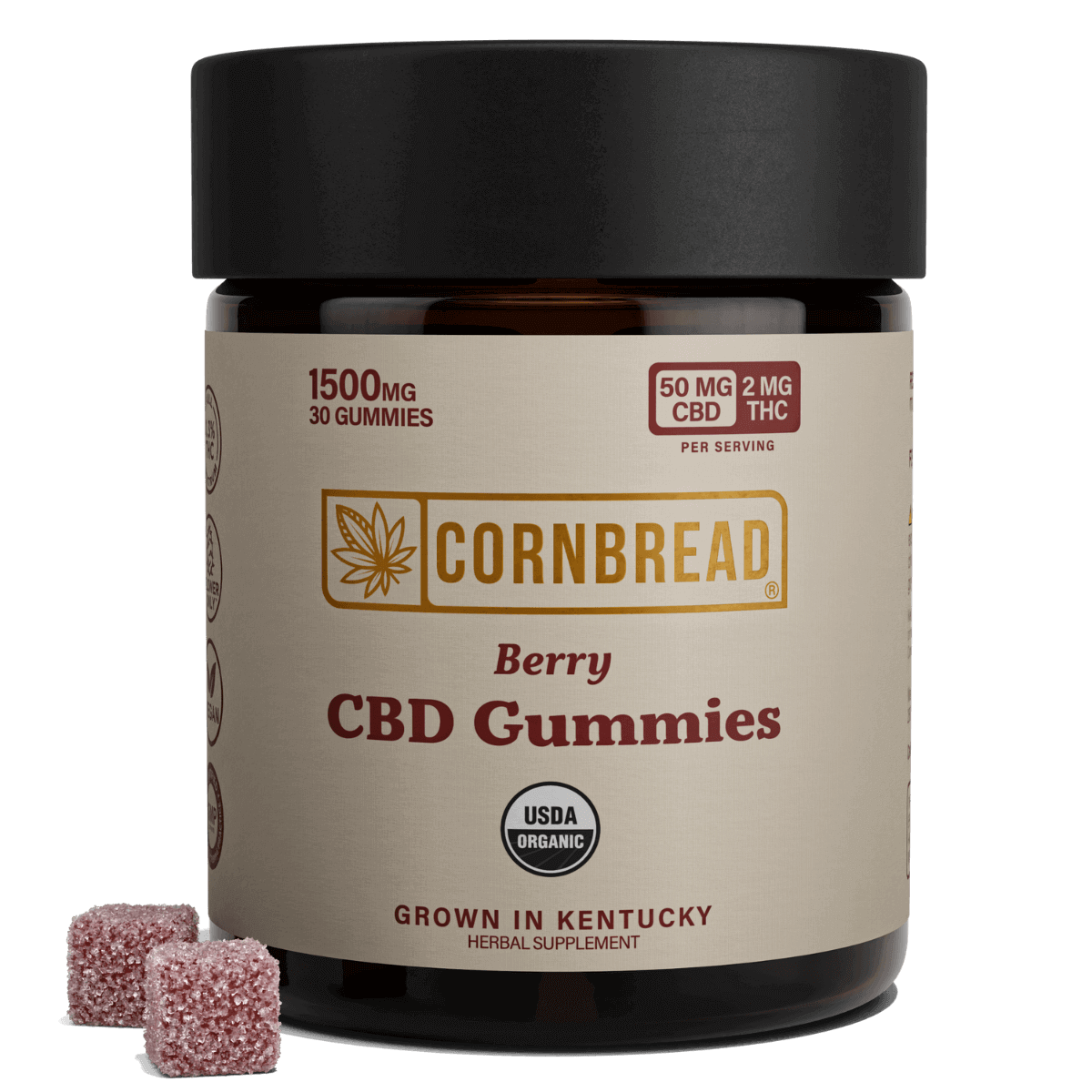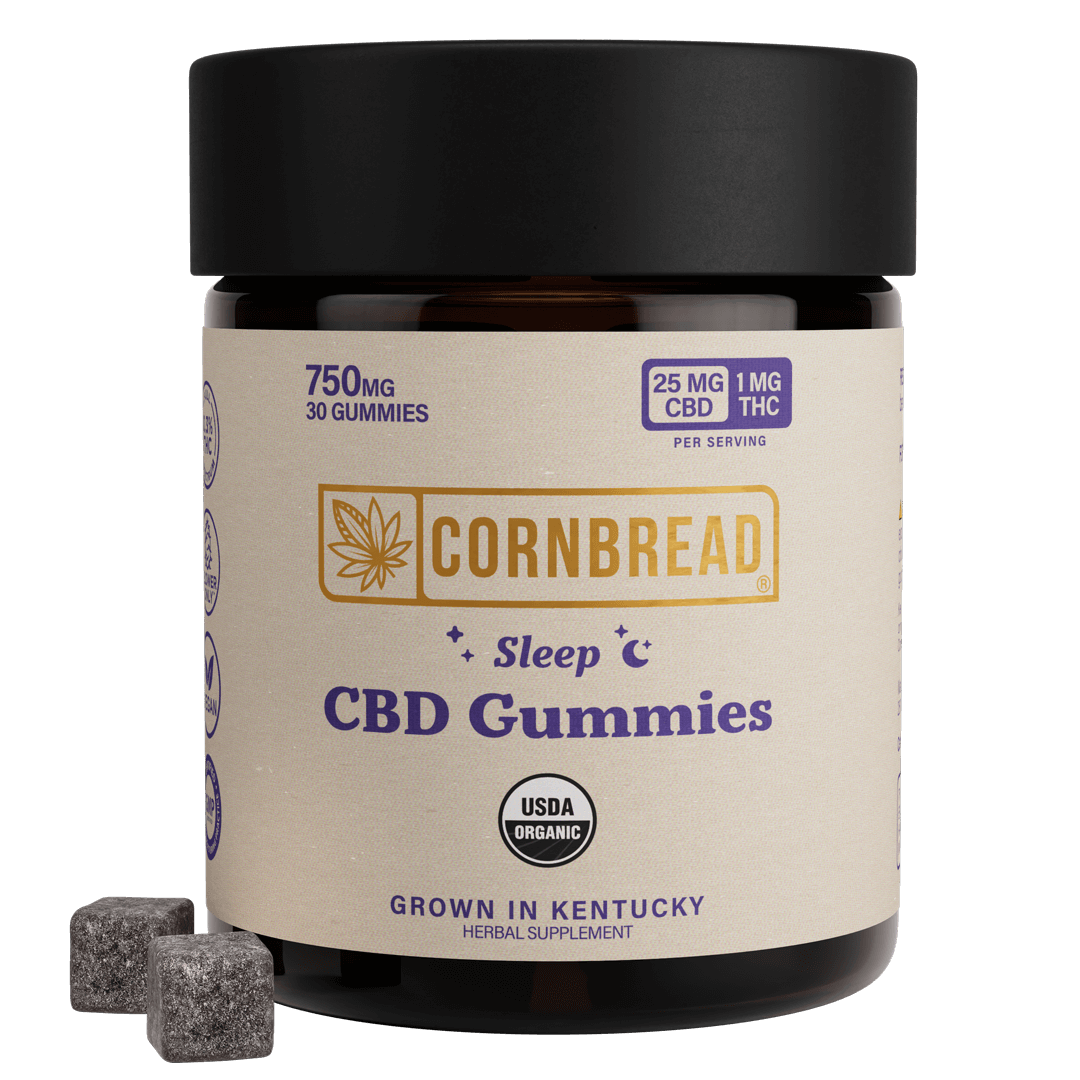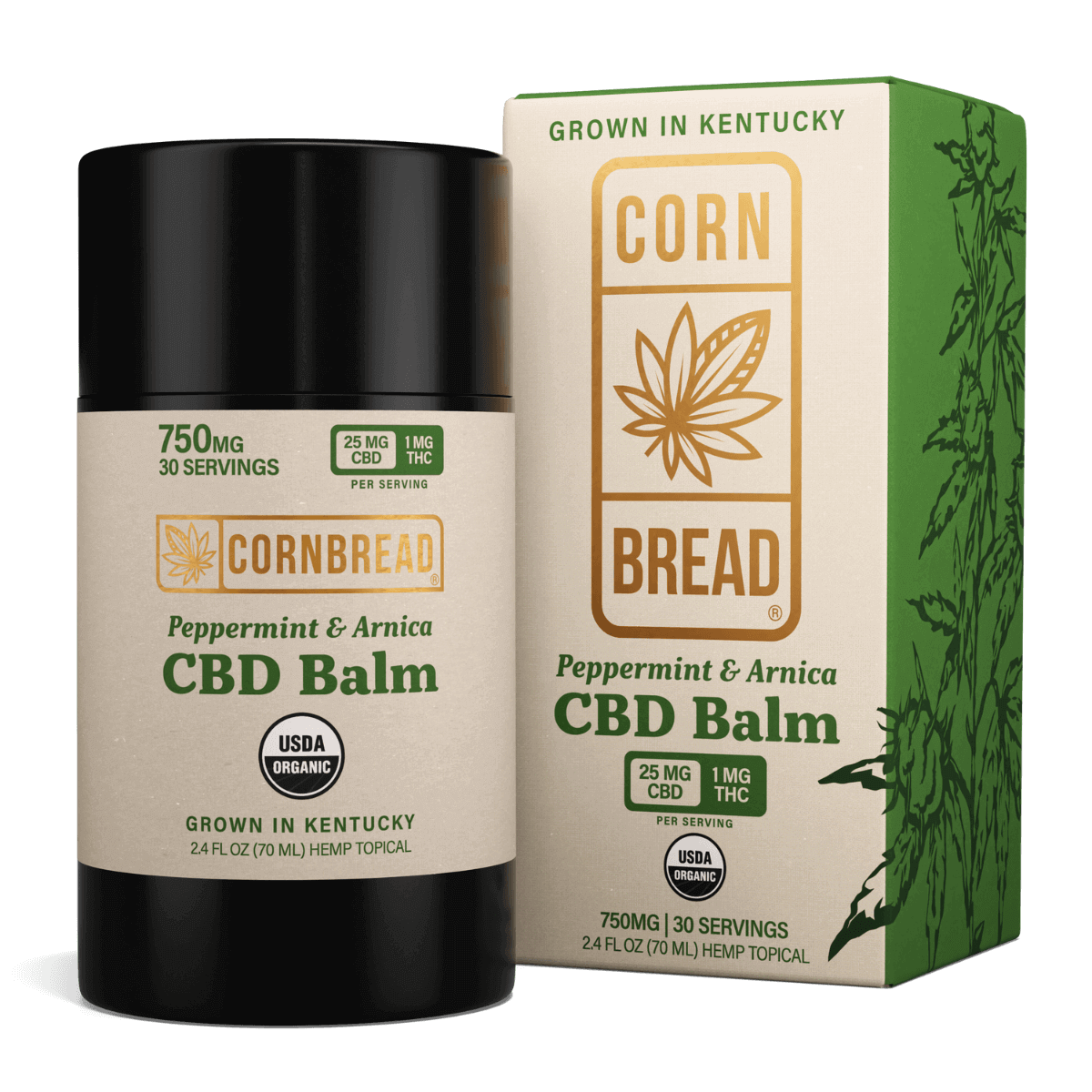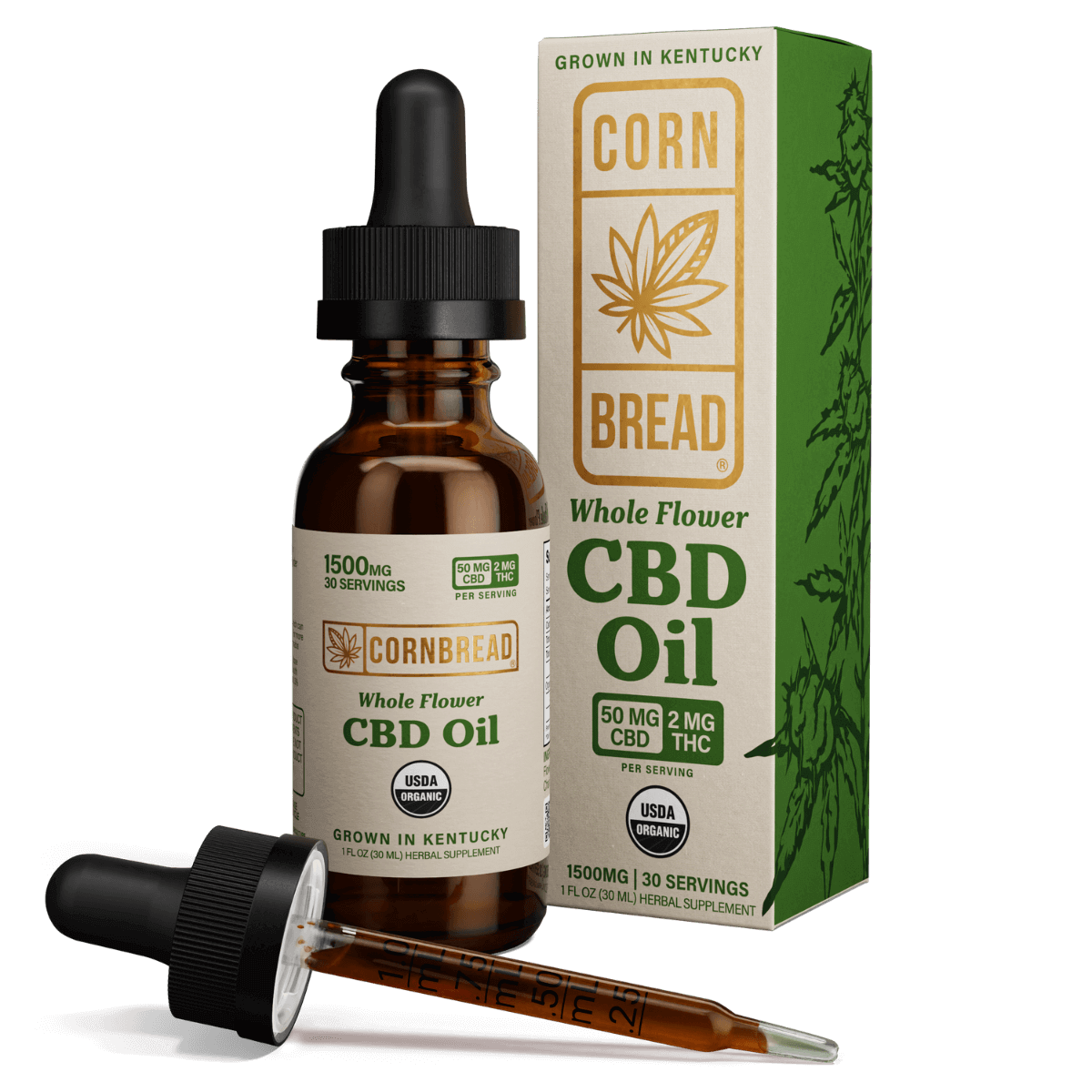Table of Contents
- What Are CBD Gummies?
- Finding Your Ideal CBD Dosage
- 5 Factors That Affect Your CBD Gummy Dosage
- How much CBD can your body absorb?
- Full Spectrum CBD Gummies
- How to Increase CBD's Bioavailability
- How Much CBD Should I Take? CBD Gummies Safe Dosage Guidelines
- Getting Started With Cornbread Hemp Organic CBD Gummies
While the most common forms of CBD are oils and extracts, another form of CBD is beginning to take center stage — CBD gummies.
Many people are choosing CBD gummies as their number one cannabidiol supplement over CBD oils and extracts, and it’s easy to see why. Some of the reasons include:
-
CBD gummies taste better.
-
CBD gummies aren't messy.
-
CBD gummies are travel-friendly.
-
CBD gummies are easy to dose properly.
This last point — proper dosing — is what we’ll be covering today in this article. Because while it’s easy to dose CBD gummies, dosages can vary person to person, and it’s not always clear how many you should be taking in your particular situation. Keep reading to learn how to figure out what CBD gummies dosage is right for you.
What Are CBD Gummies?

CBD gummies are an edible CBD supplement similar in appearance, texture, and taste to other gummy products. Like gummy vitamins, CBD gummies are a more convenient (and tastier) way to supplement a nutritional health routine. CBD gummies come in different shapes, sizes, and flavors and can be made from ingredients of varying quality — depending on the manufacturer.1
When it comes to the cannabinoid content in CBD gummies, you typically have two main options — CBD isolate (CBD on its own) and “full-spectrum” or “whole flower” CBD.
Whole flower and full-spectrum CBD gummies contain many of the 100+ cannabinoids found in hemp, including no more than 0.3 percent of tetrahydrocannabinol (THC). That's far too little to create a "high" feeling but enough to support the positive effects of the CBD and other cannabinoids through the "entourage effect" — a phenomenon whereby cannabinoids taken together create greater therapeutic benefits than they would on their own.
Due to their ability to bring about the entourage effect, whole flower and full-spectrum CBD gummies are generally considered the more effective CBD gummy options.
Finding Your Ideal CBD Dosage
CBD is a cannabinoid (cannabis compound) found in hemp and marijuana plants — both of which are subspecies of cannabis. Unlike THC (tetrahydrocannabinol), which is the primary cannabinoid in marijuana, CBD doesn’t create a “high” feeling and has been found to have potential therapeutic health benefits, including reducing daily stress, supporting sleep, and alleviating aches and pains.
But what's a standard CBD dosage, and what CBD dose is your optimal dose? The answers to those questions depend on a few key factors.
5 Factors That Affect Your CBD Gummy Dosage
1. Body Weight and CBD Gummy Dosage
When it comes to determining the proper dose of CBD, body weight plays a major role. Generally, the more you weigh, the higher the dosage of CBD gummies you’ll require.
A rule of thumb is to take 1–6 mg of CBD for every ten lbs of body weight. For example, a person weighing 150 pounds should begin with 15 mg of CBD per day and then gradually increase (up to 90 mg daily) until they achieve the desired result.
2. Personal Tolerance for CBD Gummies
If you’ve been using CBD for a while, you may develop a tolerance to the cannabinoid, in which case you would need a higher dose to achieve the effects you’re looking for.
Regardless of whether you’ve used CBD before, it’s recommended that you start on a lower CBD dosage when starting a CBD gummies regimen and increase your daily dose gradually until you find what works for you. Just keep in mind, due to tolerance, you may need to take more than you think to get the health benefits you want.
3. Severity of Issues and CBD Gummy Dosage
The severity of issues — that is, your quality of sleep, daily stress load, and aches and pains — is another critical factor that can affect your optimal dosage range. If your issues are mild, a low dose may suffice. If you’re experiencing occasional sleeplessness, stress, or discomfort, the right dosage may be a stronger one.
4. Metabolism and Your CBD Gummies Dosage
Metabolism is the process by which your body breaks down, uses, and ultimately eliminates substances (such as food, drink, and wellness supplements — including CBD). Individuals with a faster metabolism may find the positive effects of a CBD dose are shorter-lived than those with a slower metabolism. As a result, if you have a fast metabolism, you may find that a higher dose (or more frequent dose) is necessary to achieve the desired effects.
5. The CBD Concentration in CBD Gummies
Different CBD gummies contain different concentrations of CBD. And, as you may have guessed, the more CBD in each gummy, the fewer gummies will be required to make up a single daily CBD dose. It’s important to understand exactly what’s in your CBD gummy supplement to determine the right CBD dosage for you.
How much CBD can your body absorb?
The bioavailability of CBD is the amount of CBD in a supplement — whether it’s in the form of oil, gummy, extract, or other consumable — that gets absorbed and thus can be used by the body. For example, a CBD lotion applied to the skin may have 5 mg of CBD, but only 0.25 mg of CBD (or less) will make it into the bloodstream.
How you take CBD is the main factor determining its bioavailability. If the method has lower bioavailability — that is, if it results in less absorption — you might need a higher dose.
1. Topical CBD: <5% Bioavailability
Topical creams and lotions offer the least bioavailable form of CBD, with a typical bioavailability of less than 5%. When CBD is applied to the skin, it mainly interacts with local cannabinoid receptors, and only a small amount of CBD makes it into the bloodstream. As a result, topical CBD is better suited for targeted relief as opposed to systemic applications.
2. Sublingual CBD: up to 35% Bioavailability2
CBD oils and tinctures are often held under the tongue (sublingually) for 30 seconds or longer before being swallowed. This allows some CBD to be directly absorbed into the bloodstream, bypassing the digestive system and allowing for more absorption than if it had been swallowed immediately.
The longer CBD oil is held under the tongue, the more CBD will be absorbed. Taking CBD sublingually is a highly effective way to include CBD in your routine; however, it's a bit cumbersome when traveling and is less convenient than CBD gummies.
3. Edible CBD: 13%–19% Bioavailability2
Edible CBD is slightly less bioavailable than sublingual CBD, but only slightly. When consumed as an edible, CBD enters the digestive system and is then metabolized by the liver before reaching the bloodstream. This process, dubbed the "first-pass effect," is the main reason CBD edibles have a lower bioavailability than some other forms of CBD.
Consuming CBD orally means lower bioavailability, but it also means longer-lasting effects — a big plus for many consumers.
4. CBD Vape/Smoke: 11%–45% Bioavailability3
Due to the large surface area of the lungs and its many highly permeable blood vessels, CBD has a relatively high bioavailability when inhaled as a vapor or smoke. However, inhaling smoke or vapor can cause unpleasant side effects and is known to have negative impacts on one's health.
Something to keep in mind: The therapeutic effects that result from inhaling CBD come on faster than with the sublingual or edible methods, but they also tend to fade more quickly.
Full Spectrum CBD Gummies
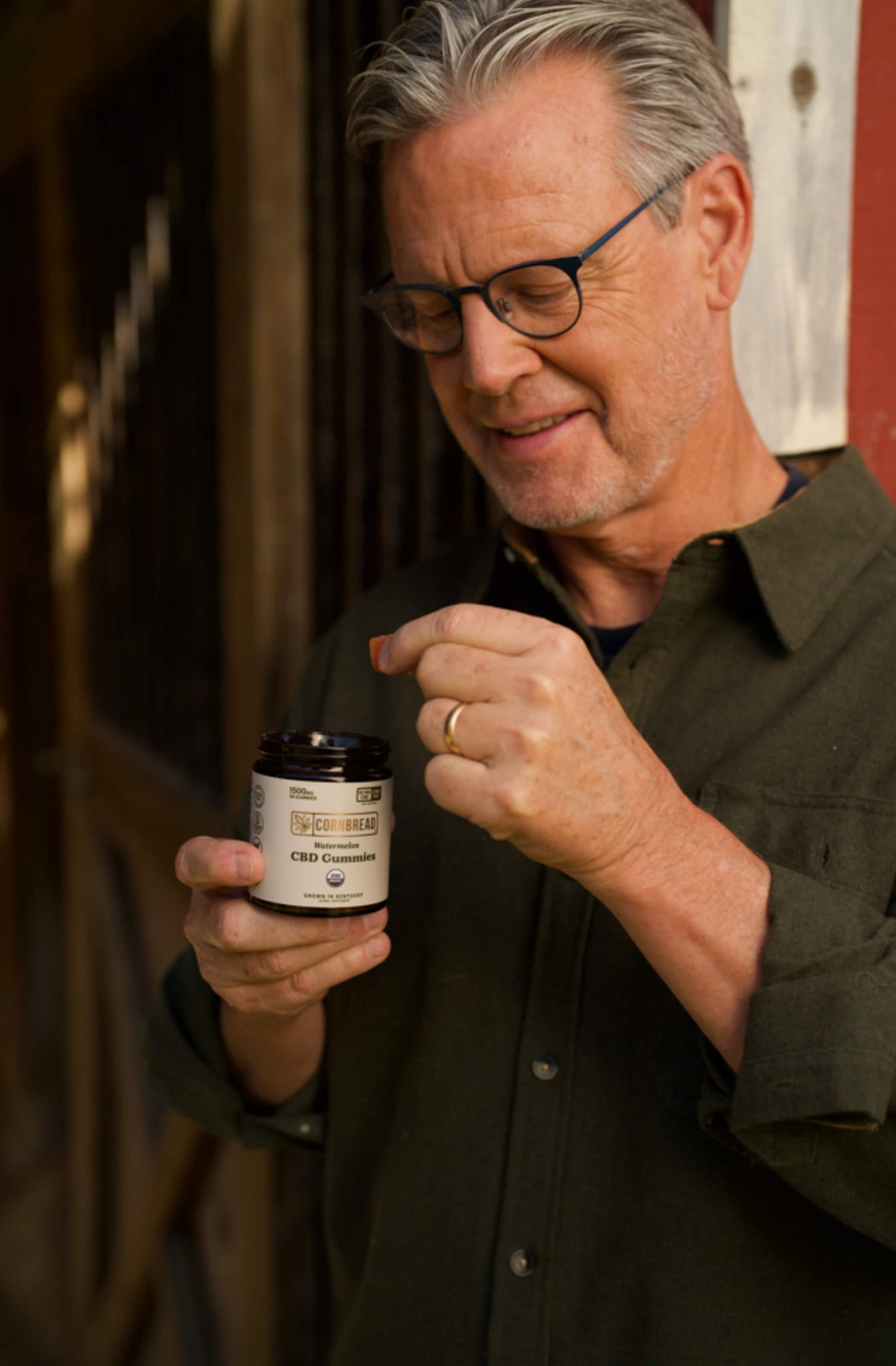
If you're thinking that some of the bioavailability rates above sound low, don't worry. Sublingual and edible CBD are two of the most common CBD supplements on the market, and their ideal dosage recommendations are made with their bioavailability in mind.
But if you'd like to make the most of your CBD gummy dosage, choosing a whole flower (or full-spectrum) CBD gummy will allow you to experience greater therapeutic benefits through the entourage effect.
How to Increase CBD's Bioavailability
A study from the University of Minnesota found that consuming CBD along with high-fat foods significantly increased the body's absorption of the CBD. The study was done on CBD oral capsules (an edible form of CBD). Ilo Leppik, one of the study's co-authors, noted that an increase in the percent "of the CBD dose being absorbed into the body can also lead to lower medication costs." Compared to taking CBD in a fasted state, taking CBD with food was observed to create the following effects:
-
Increased the amount of CBD in the body (4X)
-
Increased the maximum amount of CBD recorded in the blood (14X)
To get the most out of your CBG gummies, it’s best to avoid taking them on an empty stomach and, instead, take your CBD gummies after eating a meal rich in healthy fats. Avocados, eggs, nuts, and coconut oil, as well as some fish and meat, are all good options.
How Much CBD Should I Take? CBD Gummies Safe Dosage Guidelines

Before starting your CBD gummy regimen, consider the following tips for determining the right daily CBD gummies dosage.
1. Don't Start With Too Many CBD Gummies
When you first start taking CBD gummies, there may be a delay before you feel an effect. In fact, and like all CBD products, it could take two weeks or more for you to begin experiencing the full benefits of CBD gummies. For this reason, it’s recommended that you maintain the same standard dose for two weeks before increasing to higher doses.
Easing into your CBD regimen in this way can help you avoid taking more CBD than you need, as well as the potential discomforts that may come with taking too much.
To find your proper starting dosage for CBD gummies, use your body weight (1 mg of CBD for every 10 lbs of body weight) and gradually increase the dose until you achieve the desired effects.
2. Consider the Issues You’re Experiencing
Remember that how your issues are affecting you could play a part in determining the appropriate CBD gummy dosage for you. Individuals with only mild issues may require a lower dosage than others.
Still, be sure to start out with a low dose and slowly work your way up. If you reach the highest recommended dose for your body weight (6 mg of CBD for every ten lbs of body weight), check with your healthcare provider to see if increasing to a stronger dose is recommended.
3. Consult With Your Healthcare Provider
CBD is generally considered safe, but it’s always a good idea to consult with your doctor before starting a new supplement regimen — especially if you’re suffering from a condition that affects your metabolism or other systems that could impact your sensitivity to CBD. Your healthcare provider can help you determine the correct CBD dosage.
Getting Started With Cornbread Hemp Organic CBD Gummies
At Cornbread Hemp, we understand the importance of high-quality CBD that you can count on. Like all Cornbread Hemp CBD products, our Organic CBD Gummies are made from the flower only and are USDA-certified organic through every step of the process. Each flavor — peach, watermelon, and berry — tastes like real fruit because we use real organic fruit. And all of our CBD products are gluten-free and vegan-friendly, so they won’t interfere with other wellness goals. Shop our full-spectrum CBD gummies now.


